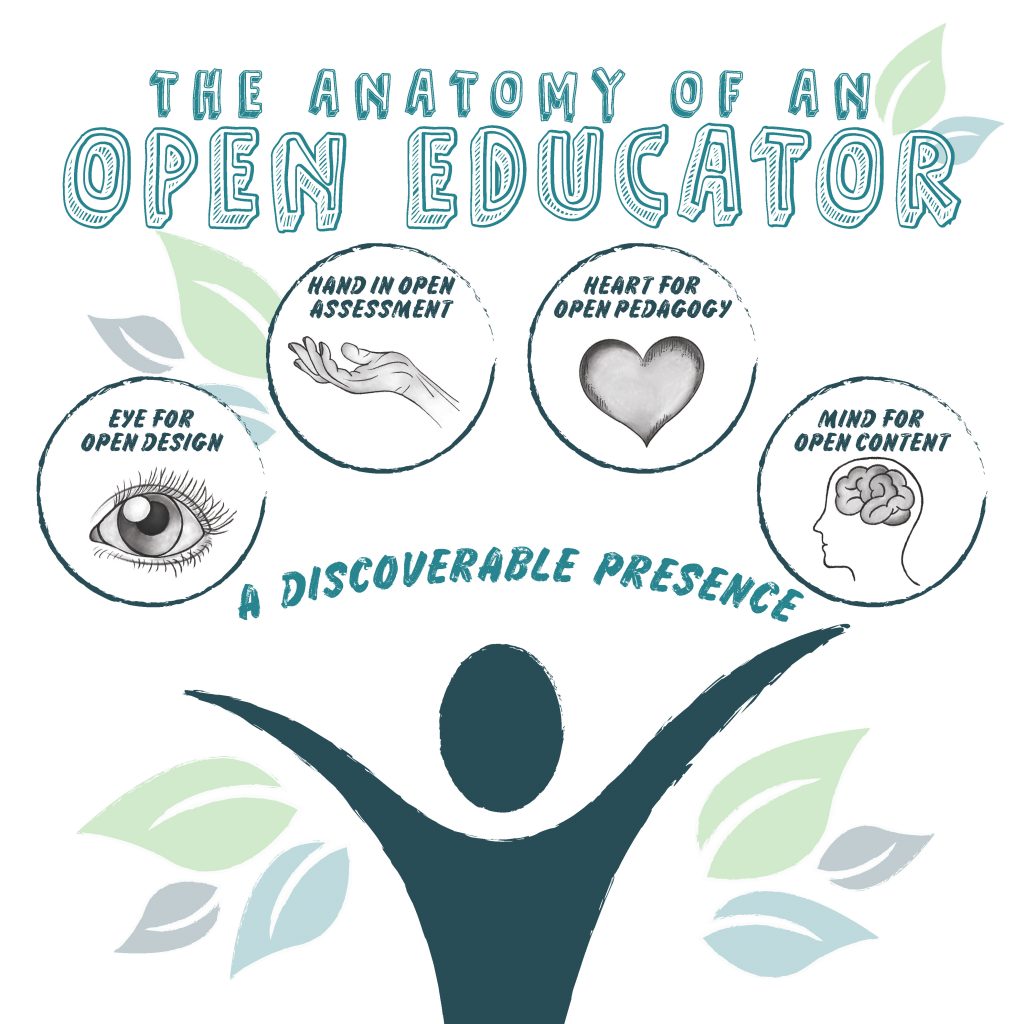Teaching in the Open
The Open Educator
There are few definitions of an open educator — most of which seem to focus on the idea that an open educator is simply defined as one who uses OER. Nascobemo and Burgos (2016) believe that using an OER is only the beginning of being an open educator.
“An open educator chooses to use open approaches, when possible and appropriate, with the aim to remove all unnecessary barriers to learning. They work through an open online identity and rely on online social networking to enrich and implement their work, understanding that collaboration bears a responsibility towards the work of others.”
— Nascobemo and Burgos (2016)
Nascobemo and Burgos (2016) have identified four main activities of an open educator. According to their research, an open educator is one who:
- implements open-learning design by openly sharing ideas and plans about their teaching activities with experts and with past and potential students, incorporating inputs and transparently leaving a trace of the development process;
- uses open-educational content by releasing their teaching resources through open licences, by facilitating the sharing of their resources through OER repositories and other means and by adapting, assembling and using OER produced by others in their teaching;
- adopts open pedagogies fostering co-creation of knowledge by students through online and offline collaboration and allowing learners to contribute to public-knowledge resources such as Wikipedia; and
- implements open-assessment practices such as peer and collaborative evaluation, open badges and e-portfolios — engaging students as well as external stakeholders in learning assessment.
“Openness is not like a light switch that is either ‘on’ or ‘off.’ Rather, it is like a dimmer switch with varying degrees of openness” (Hilton III, Wiley, Stein & Johnson, 2010). This is a great way to think about open. As an open educator, there will be areas that are comfortable for you — and some that will be challenging. Depending on the course, the format and your comfort level with teaching and learning, your degree of openness will change regularly.
During her time as an Open Education Fellow, Maureen Glynn identified the Anatomy of an Open Educator. The following set of five flip cards has been designed to illustrate this work. Please click on the “turn” icon at the bottom of the card to reveal the description of the characteristic, and use the “arrow” icon to advance to the next card. As you work through this activity, consider how each of these defining characteristics fits into your own teaching practices.
Extend Activity
Sign up for the Open Educators Factory [new tab] platform and complete a self-assessment of your level of development in terms of open education.
Upon receiving your assessment and feedback, review the ideas and suggestions offered to support your development.
Set three development goals for yourself that will help you transition to the next level as an open educator. Your goals may be specific to one area of activity (design, content, teaching, assessment) or address a combination of areas, depending on the takeaways from your self-assessment. Here are the guidelines for your three goals:
- One change you can make to your practice in the next week;
- One change you can make to your practice in the next month;
- One change you can make to your practice in the next year.
You can choose to share your work in a social media space with family, friends, and colleagues — or just save your goals to return to in one week, one month and one year.
Attribution
This page builds upon the work of:
Making Sense of Open Education Day 11 by Maureen Glynn is licensed under CC BY 4.0 International
References
Nascimbeni, F., & Burgos, D. (2016). View of In Search for the Open Educator: Proposal of a Definition and a Framework to Increase Openness Adoption Among University Educators. Retrieved 10 December 2021, from http://www.irrodl.org/index.php/irrodl/article/view/2736/3941
Hilton III, J., Wiley, D., Stein, J., & Johnson, A. (2010). The four ‘R’s of openness and ALMS analysis: frameworks for open educational resources. Open Learning: The Journal Of Open, Distance And E-Learning, 25(1), 37-44. doi: 10.1080/02680510903482132


